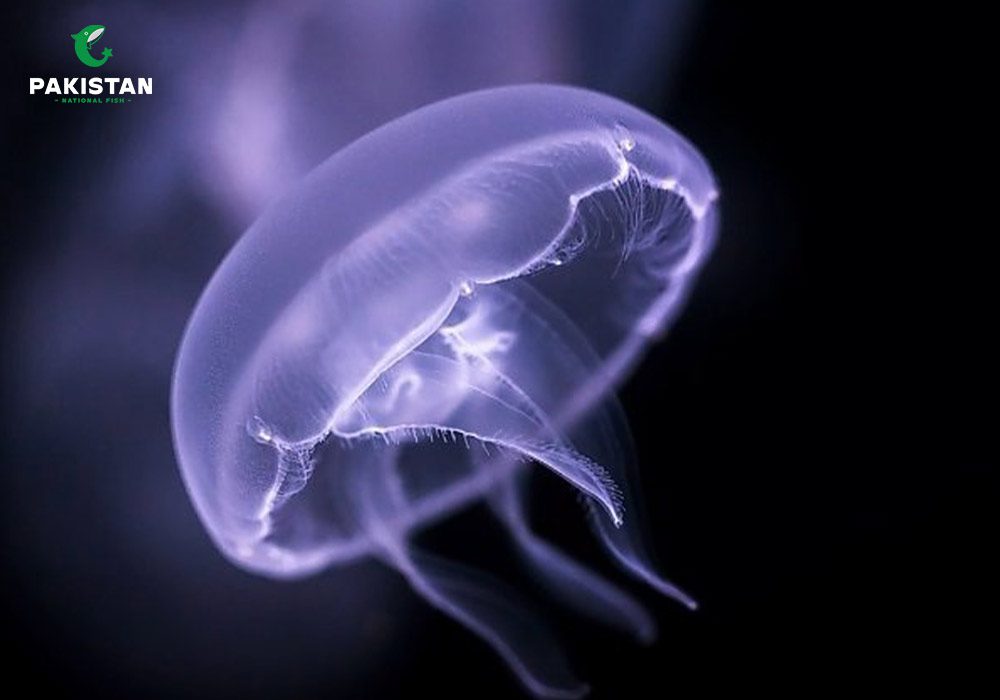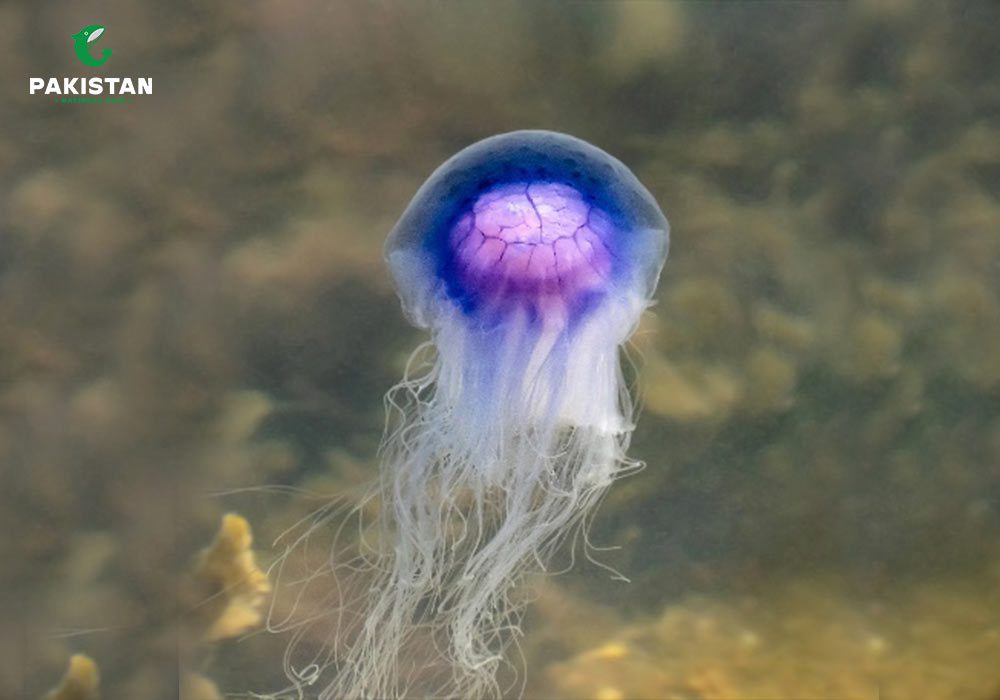Hello, adventurers of the ocean! Have you ever wondered about the wild, gelatinous cousins of a dwarf gourami that float in the deep blue, captivated by their elegant drift in an aquarium? With their throbbing bells, flowing tentacles, and ethereal glow, jellyfish—sometimes known as sea jellies—are among the most fascinating marine life. From the graceful moon jelly to the fearsome box jellyfish, the different types of jellyfish each bring their own mystery to the sea. However, these ocean jellyfish are far more complex than they first appear!
Ready to explore the scientific identity of jellyfish and uncover why one species might just be immortal? Let’s float into it!
What Are Jellyfish and Why Are They So Fascinating?
The soft-bodied, free-swimming jellyfish, which belong to the phylum Cnidaria, have been swimming through our oceans for more than 600 million years. Ocean jellyfish are invertebrates with a gelatinous body composed of approximately 95% water; they are not fish at all. Despite being classified as jellyfish, they are distinguished from corals and sea anemones by their tentacles and floating lifestyle.
Why are they so fascinating? Picture this: a creature with no heart, no brain, and a body that’s mostly water, yet it’s a fierce predator in the ocean! Their pulsating bells and glowing bioluminescence (in some species) give them an otherworldly charm, like living lanterns of the sea.
- Key Traits: No brain, heart, or lungs; they breathe through their body walls.
- Superpower: Jellyfish tentacles are armed with stinging cells called nematocysts that paralyze prey in a flash (700 nanoseconds, to be exact!).
- Fun Fact: Some jellyfish, like the Turritopsis dohrnii, can cheat death by reverting to an earlier life stage, making them biologically immortal. More on that later!
How Many Types of Jellyfish Are Out There?
Jellyfish Type | Scientific Name | Key Features | Habitat |
Moon Jellyfish | Aurelia aurita | Translucent, four horseshoe-shaped gonads, mild moon jelly sting | Worldwide, coastal waters |
Lion’s Mane Jellyfish | Cyanea capillata | Largest jellyfish, reddish-brown bell, up to 120 ft tentacles | Arctic, North Atlantic, Pacific |
Box Jellyfish | Chironex fleckeri | Cube-shaped bell, highly venomous, up to 10 ft tentacles | Tropical Pacific, Indian Oceans |
Cannonball Jellyfish | Stomolophus meleagris | Round, white bell with purple/brown band, no tentacles | Gulf of Mexico, Atlantic |
Blue Jellyfish | Cyanea lamarckii | Blue or yellow bell, smaller than lion’s mane, mild sting | UK waters, North Atlantic |
- Moon Jellyfish: These beauties are nearly transparent with delicate, short tentacles. Their moon jelly sting is harmless to humans, making them a favorite in aquariums.
- Lion’s Mane Jellyfish: The giants of the jelly world, with tentacles stretching longer than a blue whale! Their sting is painful but rarely fatal.
- Box Jellyfish: Known as sea wasps, these are the ocean’s deadliest, with venom that can kill in minutes.
- Cannonball Jellyfish: Common gulf jellyfish with a chunky, tentacle-less feeding apparatus. They’re a pest to fishermen but harmless to humans.
- Blue Jellyfish: Often confused with lion’s mane, these smaller jellies have a blue or yellow hue and a milder sting.
What Are the Key Parts of a Jellyfish?
Understanding jellyfish anatomy is like peeking into an alien blueprint. Their simple yet effective design includes:
- Bell: The umbrella-shaped body that pulses for movement.
- Jellyfish Tentacles: Armed with nematocysts for capturing prey and defense.
- Manubrium Jellyfish: A tube-like structure with the jellyfish mouth at the end, used to ingest food.
- Oral Arms: Frilly structures that guide food to the mouth.
- Gastrodermis: The inner layer where digestion happens.
- Mesoglea: The jelly-like middle layer giving structure (95% water!).
- Nerve Net: A simple nervous system for sensing light, touch, and chemicals.

Caption:
The parts of a jellyfish work together like a perfectly choreographed dance, from the pulsating bell to the stinging tentacles.
What Colors Do Jellyfish Come In?
Jellyfish are like floating rainbows, with colors ranging from translucent to vibrant hues:
- Moon Jellyfish: Nearly transparent with pale purple or pink gonads.
- Lion’s Mane Jellyfish: Light orange to deep crimson, darkening with age.
- Blue Jellyfish: Blue or yellow, often mistaken for lion’s mane.
- Mauve Stinger: Purple with orangey-brown warts, glowing with bioluminescence.
- Box Jellyfish: Pale blue or transparent, with a deadly sting.
- Magic Point: Some jellyfish, like the mauve stinger, use bioluminescence to startle predators, creating a dazzling underwater light show!
Do Jellyfish Change Color?
Yes, some jellyfish can change color based on age, diet, or environment. For example:
- Lion’s Mane Jellyfish: Young ones are light orange, while older ones turn deep red.
- Mauve Stinger: Shifts between purple and brownish hues depending on light and food.
- Environmental Impact: Algae in their tissues (like in upside-down jellyfish) can alter their color through photosynthesis.
- Pro Tip: If you spot a jellyfish changing color, it might be adapting to its surroundings or signaling maturity. Nature’s mood ring!
Which Jellyfish Are Poisonous and How Bad Are They?
Not all jellyfish are created equal when it comes to their sting. Here’s a rundown of which jellyfish are bad:
- Box Jellyfish (Chironex fleckeri): The most venomous, with a sting that can cause heart failure in minutes. Found in Australian and Pacific waters.
- Portuguese Man-of-War (Physalia physalis): Not a true jellyfish but a siphonophore with a potent sting that can cause severe pain and, rarely, death.
- Lion’s Mane Jellyfish: Painful but not usually deadly; causes burning and redness.
- Sea Nettle (Chrysaora quinquecirrha): Common in the US, with moderate to severe stings causing skin irritation.
- Safety Tip: Always rinse a sting with vinegar or seawater (not freshwater!) and seek medical help for severe reactions.
Can Moon Jellies Sting You?
Yes, moon jellies (Aurelia aurita) can sting, but their moon jelly sting is mild and harmless to humans. Their short, fine tentacles have nematocysts, but the venom is too weak to cause more than a slight tingle.
- Why It’s Safe: The sting doesn’t penetrate human skin deeply, so you’re unlikely to feel it.
- Fun Fact: Moon jellies are a favorite aquarium species because they’re safe to touch in controlled settings.

Are Blue Jellyfish Poisonous?
Blue jellyfish (Cyanea lamarckii) have a mild sting that’s not considered poisonous to humans. You might feel a slight burn or itch, but it’s rarely serious. They’re often confused with the more dangerous lion’s mane due to their similar shape.
- Identification Tip: Look for a smaller, blue or yellow bell to distinguish them from the lion’s mane’s reddish-brown hue.

What’s the Most Beautiful Jellyfish in the Ocean?
Beauty is subjective, but the most beautiful jellyfish title often goes to the Mauve Stinger (Pelagia noctiluca) for its glowing, purple-blue bell and bioluminescent sparkle. Others might vote for:
- Fried Egg Jellyfish (Cotylorhiza tuberculata): With its sunny yellow bell and white “pebbles,” it looks like a floating egg yolk.
- Crystal Jellyfish (Aequorea victoria): Known for its shimmering, bioluminescent glow.
- Magic Point: The mauve stinger’s night-time glow is like a disco ball in the ocean, making it a favorite for night divers!
Who Are the Lion’s Mane Jellyfish Predators?
Despite their size and sting, lion’s mane jellyfish predators include:
- Leatherback Sea Turtles (Dermochelys coriacea): These turtles munch on lion’s mane like it’s a jelly buffet.
- Ocean Sunfish (Mola mola): They gobble up jellies as a primary food source.
- Seabirds (e.g., Fulmars): They peck at jellies near the surface.
- Other Jellyfish: Some species, like the egg yolk jelly, eat smaller lion’s mane jellies.
- Ecosystem Note: Predators help control jellyfish blooms, keeping ocean ecosystems balanced.

What Are Gulf Jellyfish All About?
Gulf jellyfish, like the Cannonball Jellyfish (Stomolophus meleagris), are common in the Gulf of Mexico. They’re round, white, and lack traditional jellyfish tentacles, using oral arms for feeding instead. Here’s the scoop:
- Habitat: Coastal waters, estuaries, and nearshore areas.
- Behavior: They drift with currents, feeding on plankton and small organisms.
- Impact: Considered pests by fishermen due to net-clogging but harmless to humans.
- Fun Fact: Cannonballs are harvested in the southeastern US and exported to Asia as a delicacy!

Do Jellyfish Have Brains, and Why Is One Species Immortal?
Do they have brains? Nope! Jellyfish lack a central brain, relying on a nerve net to sense their environment. This simple system detects light, touch, and chemicals, allowing them to hunt and move.
- How It Works: The nerve net coordinates muscle contractions for swimming and feeding, like a decentralized control system.
Now, about that biologically immortal species: the Immortal Jellyfish (Turritopsis dohrnii) can revert from its adult medusa stage to a polyp stage through a process called transdifferentiation. This means it can theoretically live forever, restarting its life cycle when conditions are tough.
- Reality Check: In the wild, most die from predation or disease, but in theory, they’re immortal.
- Magic Point: Scientists are studying this jelly to unlock secrets about aging and regeneration!
How Do You Identify Jellyfish and Similar Creatures?
Identifying jellyfish and jelly-like animals can be tricky since some creatures, like comb jellies and siphonophores, mimic their look. Here’s how to spot true jellyfish:
- True Jellyfish (Scyphozoa): Bell-shaped, with jellyfish tentacles and a manubrium jellyfish for feeding.
- Box Jellyfish (Cubozoa): Cube-shaped bell, four tentacle clusters, highly venomous.
- Comb Jellies (Ctenophora): No sting, use sticky colloblasts, and have rainbow-like combs.
- Siphonophores (e.g., Portuguese Man-of-War): Colonies of zooids, not true jellyfish, with a float and long tentacles.
- Identification Tip: Check the bell shape, tentacle count, and habitat. For example, gulf jellyfish like cannonballs lack tentacles, while lion’s mane have hundreds.
FAQs
Wrapping Up the Jellyfish Journey
The morphology, vivid colours, and unexpected behaviours of jellyfish make them resemble the ocean’s floating mysteries. From the innocuous moon jelly sting to the lethal box jellyfish, these animals serve as a reminder of the ocean’s diversity and untamed nature.
Whether you’re spotting gulf jellyfish or marveling at a lion’s mane, there’s always more to learn.
Got a jellyfish story or question? Drop it in the comments, and let’s keep exploring the deep blue together!


